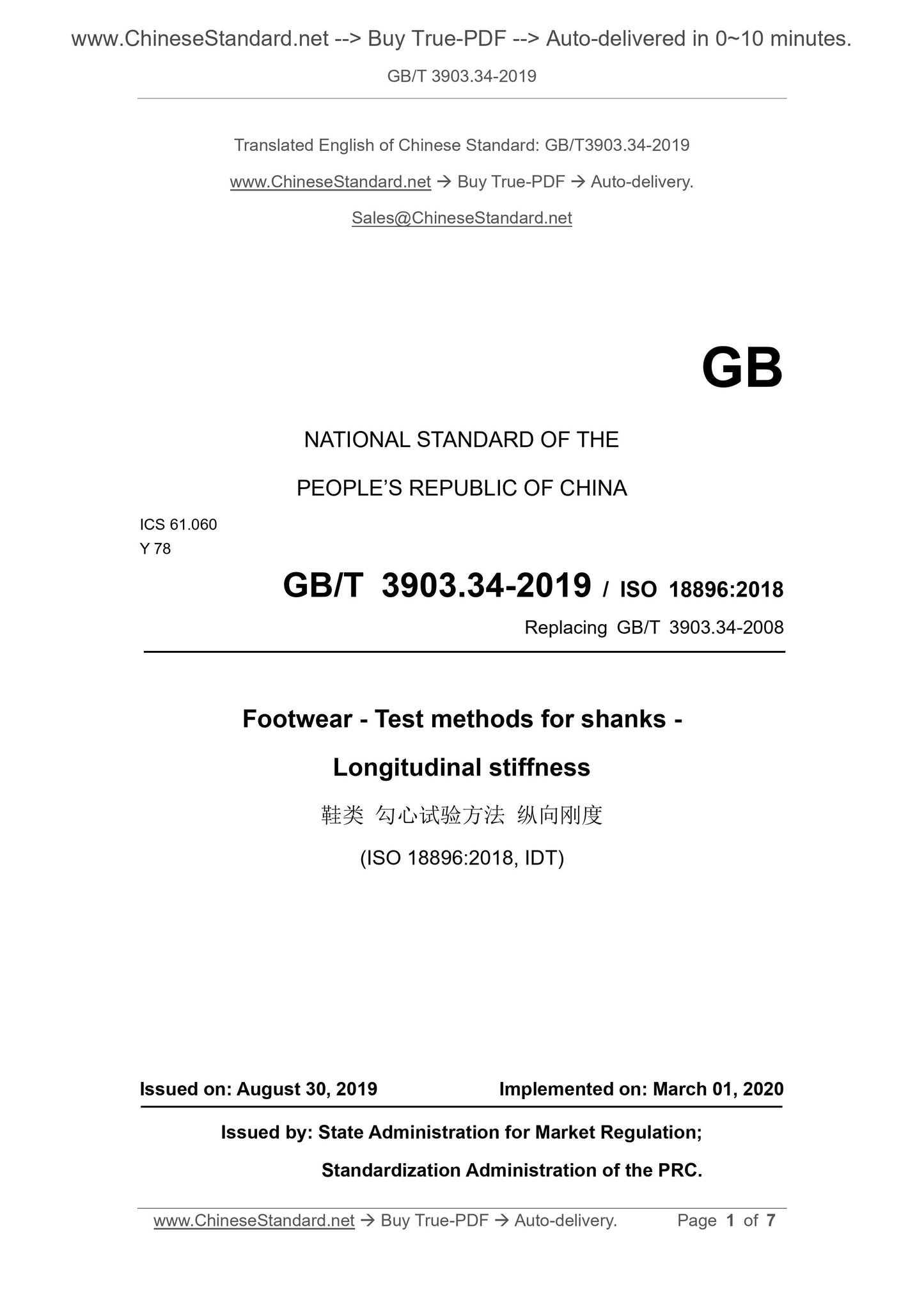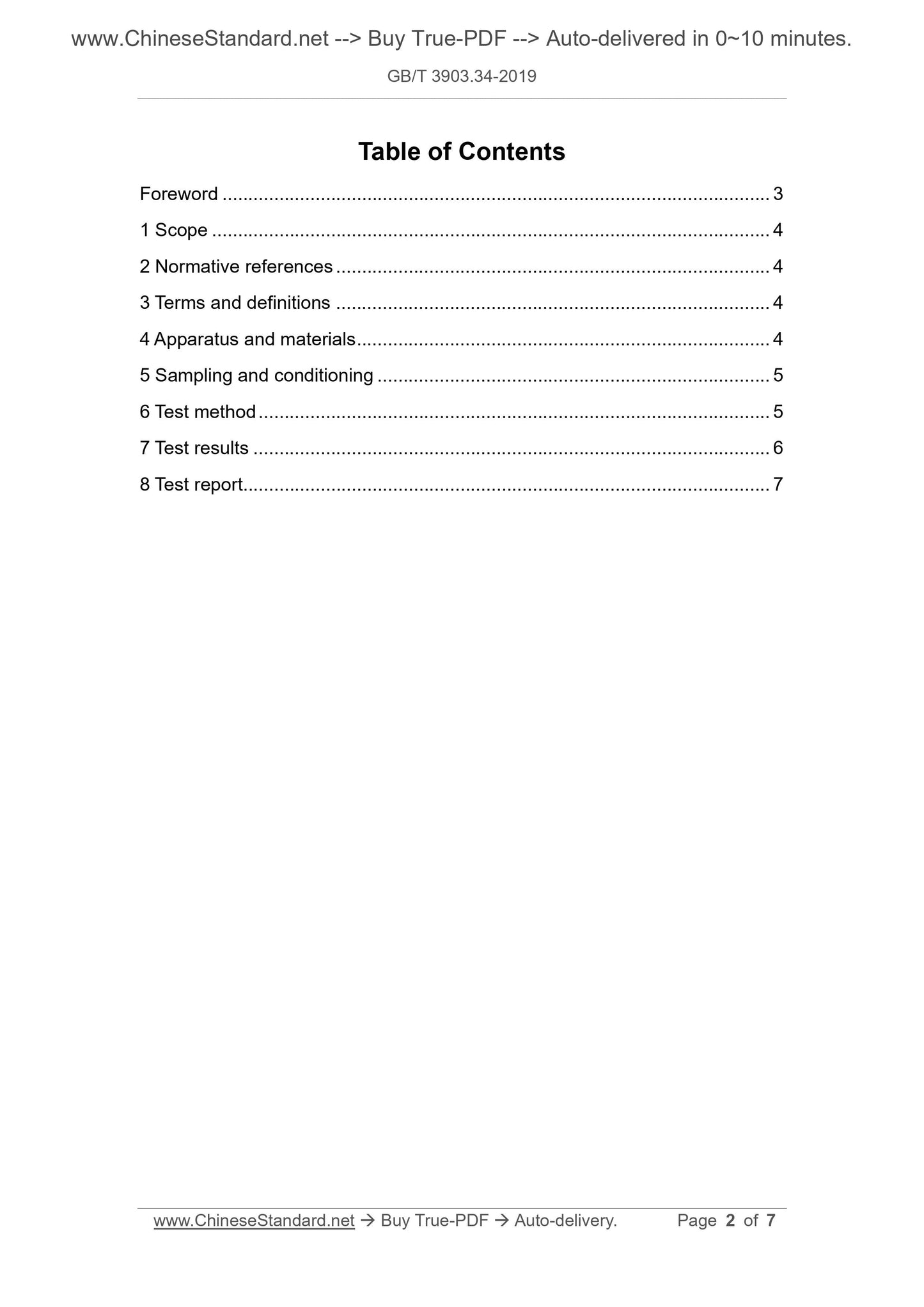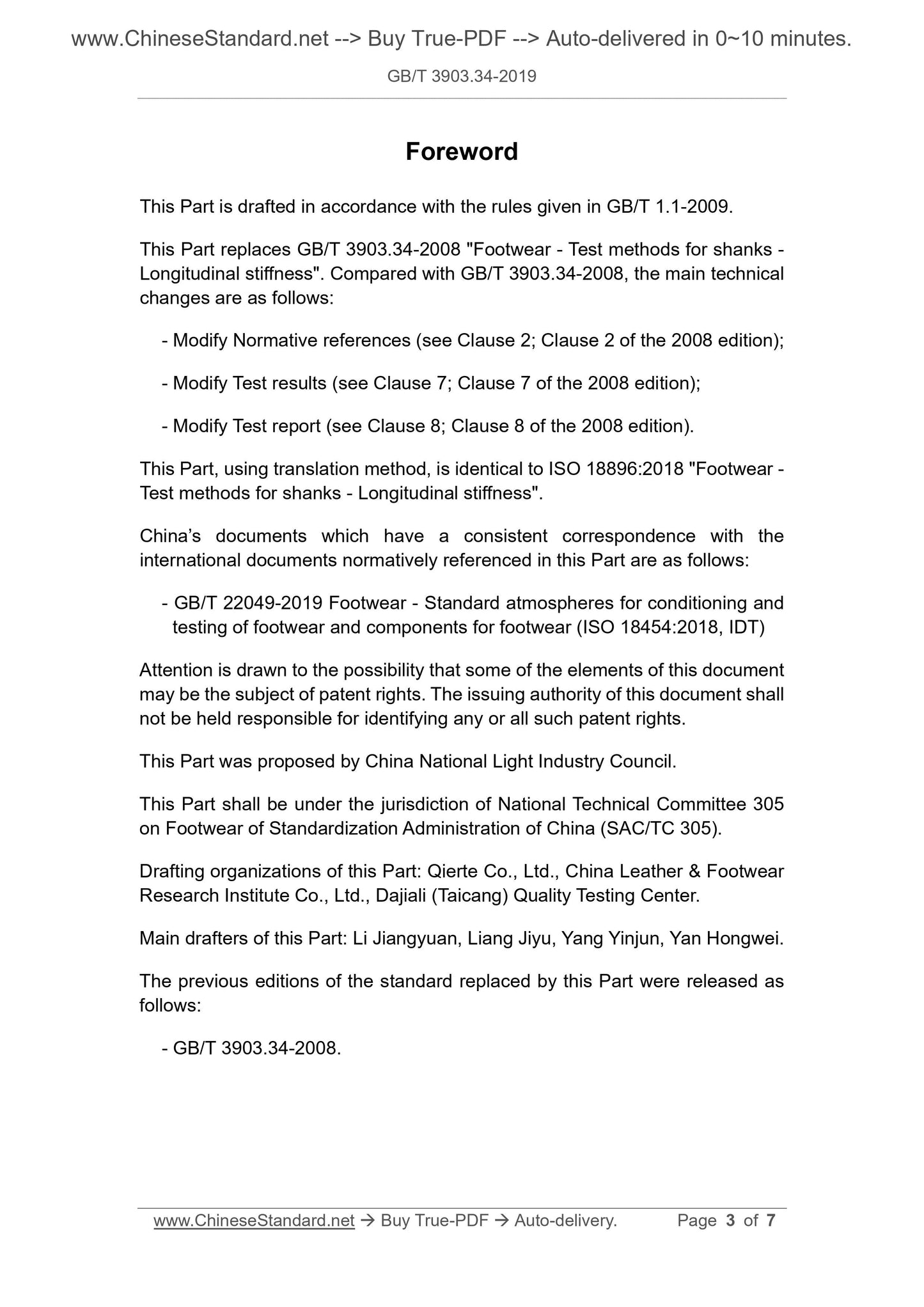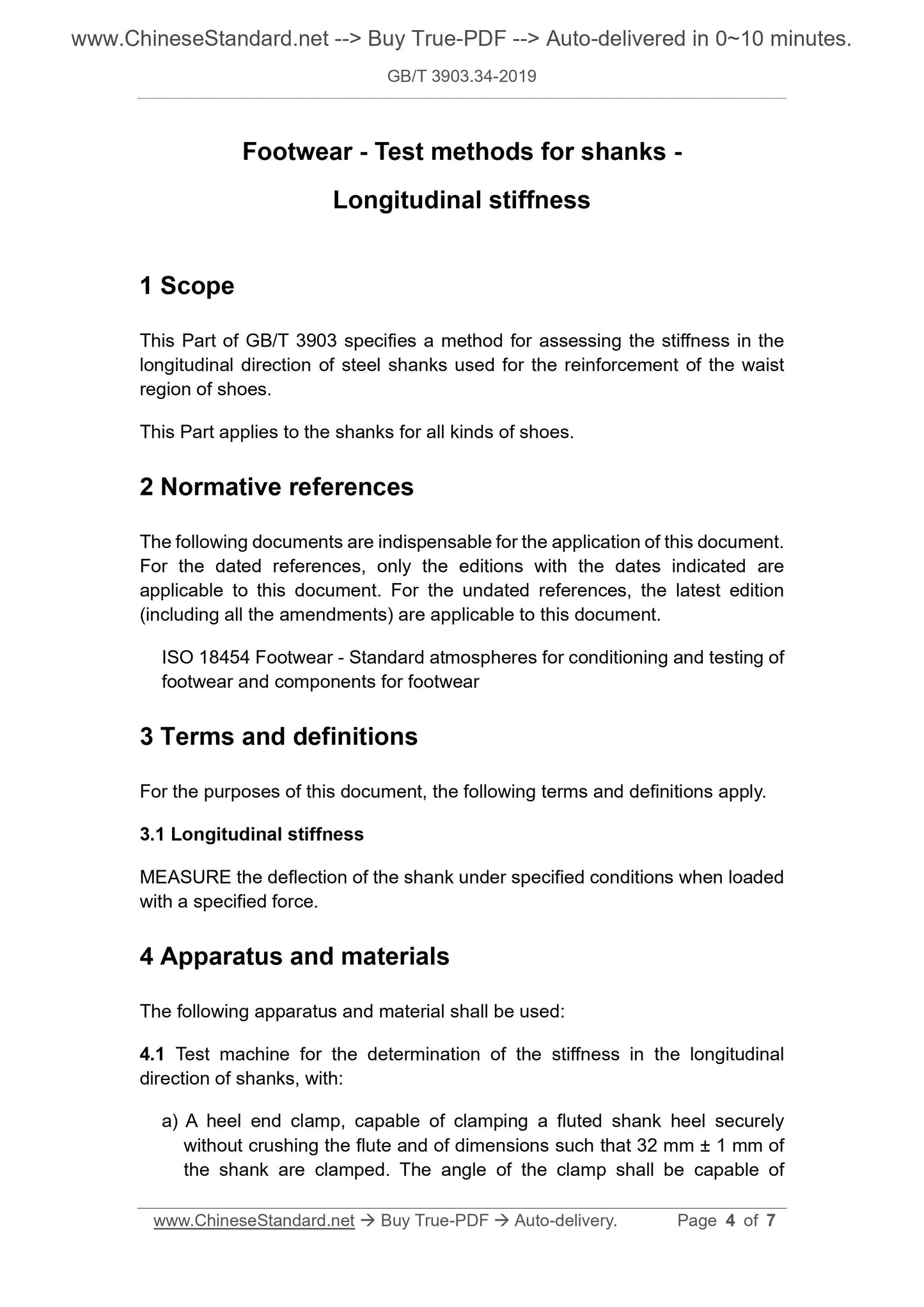1
/
of
4
www.ChineseStandard.us -- Field Test Asia Pte. Ltd.
GB/T 3903.34-2019 English PDF (GB/T3903.34-2019)
GB/T 3903.34-2019 English PDF (GB/T3903.34-2019)
Regular price
$105.00
Regular price
Sale price
$105.00
Unit price
/
per
Shipping calculated at checkout.
Couldn't load pickup availability
GB/T 3903.34-2019: Footwear - Test methods for shanks - Longitudinal stiffness
Delivery: 9 seconds. Download (and Email) true-PDF + Invoice.Get Quotation: Click GB/T 3903.34-2019 (Self-service in 1-minute)
Newer / historical versions: GB/T 3903.34-2019
Preview True-PDF
Scope
This part of GB/T 3903 specifies the longitudinal stiffness test method for evaluating steel hooks used to reinforce the lumbar region of footwear.This section applies to all kinds of footwear with a hook.
Basic Data
| Standard ID | GB/T 3903.34-2019 (GB/T3903.34-2019) |
| Description (Translated English) | Footwear - Test methods for shanks - Longitudinal stiffness |
| Sector / Industry | National Standard (Recommended) |
| Classification of Chinese Standard | Y78 |
| Classification of International Standard | 61.060 |
| Word Count Estimation | 6,679 |
| Date of Issue | 2019-08-30 |
| Date of Implementation | 2020-03-01 |
| Issuing agency(ies) | State Administration for Market Regulation, China National Standardization Administration |
Share







